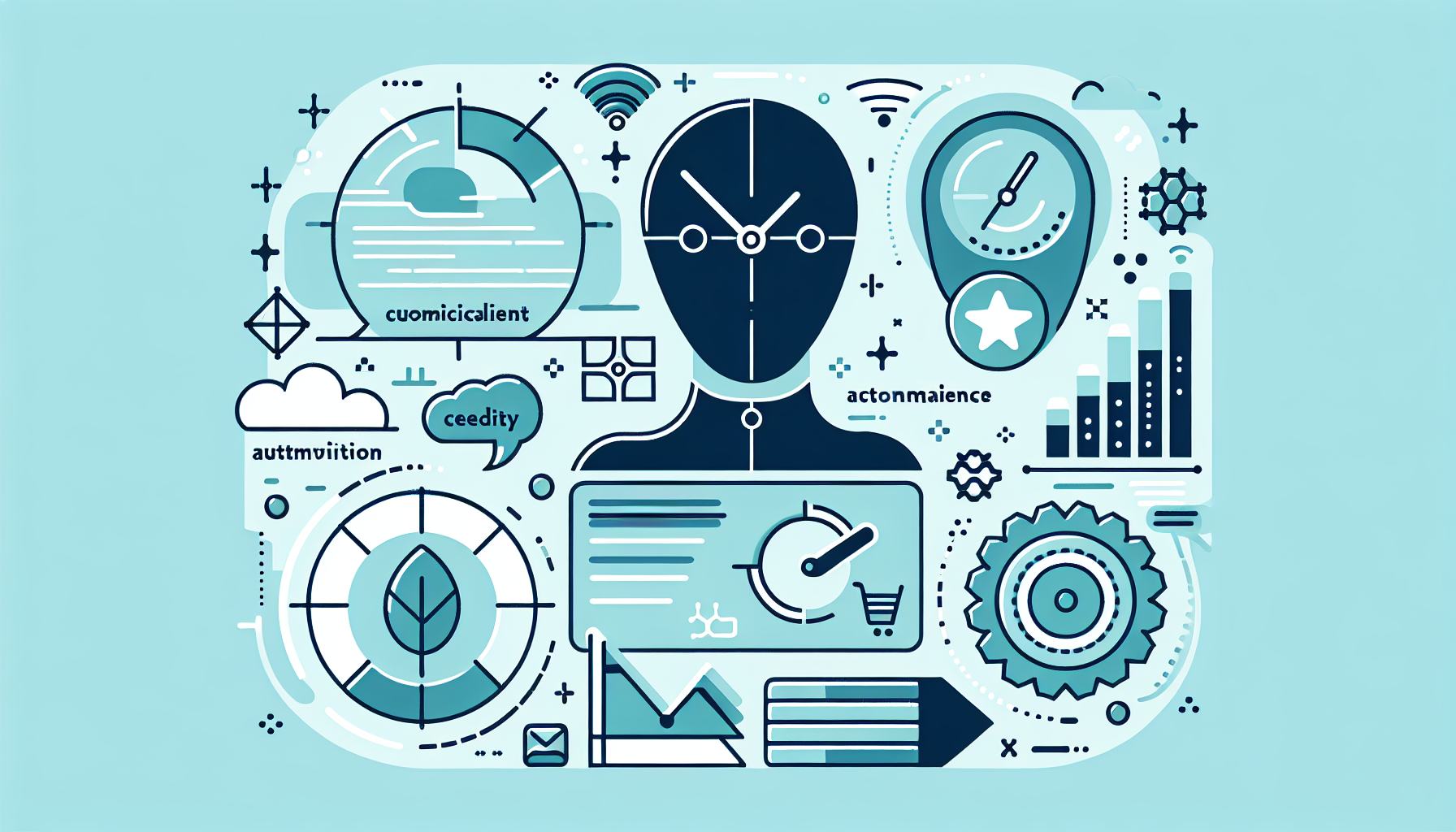Complete AI Prompt Pack
1000+ prompts • $37
We all know that managing customer service interactions can be challenging. Whether it’s dealing with complaints or fielding inquiries, it can feel like you’re juggling flaming swords. It’s totally normal to seek tools that can make this juggling act a bit easier!
If you stick around, I promise you’ll discover some fantastic ChatGPT prompts that can transform your customer service game. By using the right prompts, you can tackle issues more efficiently and maintain a cheerful demeanor, even on the busiest days.
Get ready to explore practical prompts that will help you elevate your customer support, handle complaints gracefully, provide valuable information, and even train your team. Let’s dive in!
Key Takeaways
- Utilize specific ChatGPT prompts to streamline customer service interactions.
- Prompts can enhance response efficiency, making it easier to answer common questions and complaints.
- Create empathetic responses to effectively handle customer complaints and retain clients.
- Use friendly yet professional language to build rapport and ensure customer satisfaction.
- Implement prompts for product information to help customers make informed decisions.
- Train service reps using simulated scenarios to improve their interaction skills.
- Follow up with customers post-interaction to show appreciation and gather feedback.
- Customize responses based on customer context for better engagement and communication.

Top ChatGPT Prompts for Customer Service
When it comes to customer service, having the right prompts for ChatGPT can significantly enhance interactions.
Using effective ChatGPT prompts can streamline responses, making them quicker and more informative, which is essential for maintaining a positive customer experience.
Here are some prompts you can copy and paste to start improving your customer service operations:
- “Provide a brief overview of our product offerings for a first-time customer.”
- “Summarize our return policy in simple terms.”
- “Suggest enhancements to our current customer support process based on recent feedback.”
- “Draft a greeting message for users reaching out for live support.”
These prompts help to address common queries and improve the flow of conversations, thereby enhancing customer engagement.
How to Use ChatGPT for Customer Support Queries
Using ChatGPT for customer support queries is straightforward and can be broken down into a few actionable steps.
First, prepare a list of frequently asked questions (FAQs) that your customers usually ask.
Next, create specific prompts for each question, so ChatGPT can provide accurate and relevant answers.
For instance, you can use the following prompt for a commonly asked question:
- “How can I reset my password?”
This prompt will generate a response outlining the password reset process, which can be shared with customers instantly.
Continuously fine-tune your prompts and responses based on customer feedback to optimize ChatGPT’s effectiveness.
Prompts for Handling Customer Complaints Effectively
Handling customer complaints is crucial for retaining clients, and ChatGPT can assist in generating effective responses.
The key to resolving complaints is to show empathy and provide solutions promptly.
You can use the following prompts to guide your interactions:
- “Acknowledge the complaint: ‘I understand your concern about [issue]. Let’s find a solution together.’”
- “Generate possible resolutions for a customer unhappy with a product delivery.”
- “Craft a follow-up message after resolving a complaint: ‘I hope our solution addressed your concern regarding [issue].’”
These prompts not only convey empathy but also encourage a constructive dialogue that can lead to better customer satisfaction.
Creating Friendly and Professional Responses with ChatGPT
Creating a friendly yet professional tone in customer service responses can greatly influence customer satisfaction.
To achieve this balance with ChatGPT, start with a prompt that sets the right tone.
Here are some example prompts:
- “Write a warm welcome message for returning customers.”
- “Compose a response to a casual inquiry while maintaining professionalism.”
- “Draft a message that thanks customers for their feedback and invites them to share more.”
Incorporating these friendly yet professional elements can help in building rapport with customers, making them feel valued and heard.

Prompts for Providing Product Information and Suggestions
Providing accurate product information and personalized suggestions can elevate a customer’s shopping experience.
Using ChatGPT effectively for these tasks requires clear prompts designed to elicit detailed and relevant product information.
Here are some ready-to-use prompts that you can implement right away:
- “Explain the features and benefits of [Product Name].”
- “What are the top three products we offer for [specific need, e.g., fitness training]?”
- “List complementary products for someone purchasing [Product Name].”
- “Summarize customer reviews for [Product Name] and highlight key feedback.”
- “Provide a comparison between [Product A] and [Product B].”
- “What are the most common questions customers ask about [Product Name]?”
These prompts will guide ChatGPT to generate insightful product information that can help customers make informed decisions.
Using ChatGPT to Train Customer Service Representatives
Training customer service representatives using ChatGPT can enhance their skills and improve overall service quality.
This can be done by creating training modules that simulate real-life customer interactions.
Here are some effective prompts for training scenarios:
- “Simulate a customer interaction where the customer is upset about a late delivery.”
- “Draft a role-play scenario where the agent helps a customer troubleshoot a technical issue.”
- “Generate a list of best practices for handling irate customers.”
- “Create a dialogue for a customer service agent dealing with a billing inquiry.”
These prompts can guide both training sessions and assessments, allowing new representatives to experience a variety of customer scenarios.
Prompts for Following Up with Customers After Support Interactions
Follow-ups are key to maintaining a good relationship with customers after their support issues are resolved.
Using ChatGPT, you can craft thoughtful follow-up messages with prompts tailored for various situations.
Consider these prompts for effective customer follow-ups:
- “Draft a follow-up email to a customer after resolving their technical issue.”
- “Write a message thanking a customer for their patience during a service disruption.”
- “Create a feedback collection email after a support interaction: ‘We’d love to hear your thoughts on our service!’”
- “Generate a prompt asking customers if they need further assistance after their last inquiry.”
These prompts can help ensure customers feel appreciated and understood, enhancing overall satisfaction and retention.
Customizing ChatGPT Responses for Different Customer Scenarios
Customizing responses to fit different customer scenarios is crucial for effective communication.
ChatGPT can be tailored to respond appropriately based on the context and specifics of the situation.
Here are some prompts that facilitate customization:
- “Create a response for a first-time customer asking about our company values.”
- “Write a message to a returning customer who has questions about a recent promotion.”
- “Generate responses tailored to a tech-savvy customer compared to a beginner.”
- “Draft a response for a customer reaching out after hours with an urgent issue.”
These customizable prompts enable ChatGPT to adapt its responses, ensuring relevance and enhancing customer engagement.

Benefits of Using ChatGPT in Customer Service Operations
Using ChatGPT in customer service operations comes with a host of advantages that can streamline processes and enhance customer satisfaction.
First and foremost, it can handle a large volume of inquiries simultaneously, which minimizes wait times for customers.
This scalability means that during peak hours, customer support can still be efficient without overwhelming human agents.
Here are some specific benefits you can expect:
- “Describe how ChatGPT can reduce operational costs through automation.”
- “Provide insights into how data from ChatGPT interactions can inform business decisions.”
- “List the ways ChatGPT can improve response consistency compared to human agents.”
- “Explain how using ChatGPT can speed up response times in customer inquiries.”
- “Outline the ease of deployment for ChatGPT in existing customer service frameworks.”
By leveraging these capabilities, organizations can create a more efficient and responsive customer service experience that keeps customers coming back.
FAQs
You can use prompts that acknowledge the customer’s feelings, such as “I understand your concern about [issue]. Can you provide more details?” This helps customers feel heard and opens a dialogue for resolution.
ChatGPT can be customized by adjusting prompts to fit specific scenarios, such as using product-specific questions or addressing different customer backgrounds, ensuring more relevant and personalized interactions.
Benefits include improved response times, 24/7 availability, handling repetitive inquiries efficiently, and freeing staff to tackle complex issues, ultimately enhancing customer satisfaction and operational efficiency.
Yes, ChatGPT can assist in training by providing role-playing scenarios, simulating customer interactions, and offering feedback, enabling representatives to practice and improve their communication skills effectively.
Last updated: August 10, 2024
